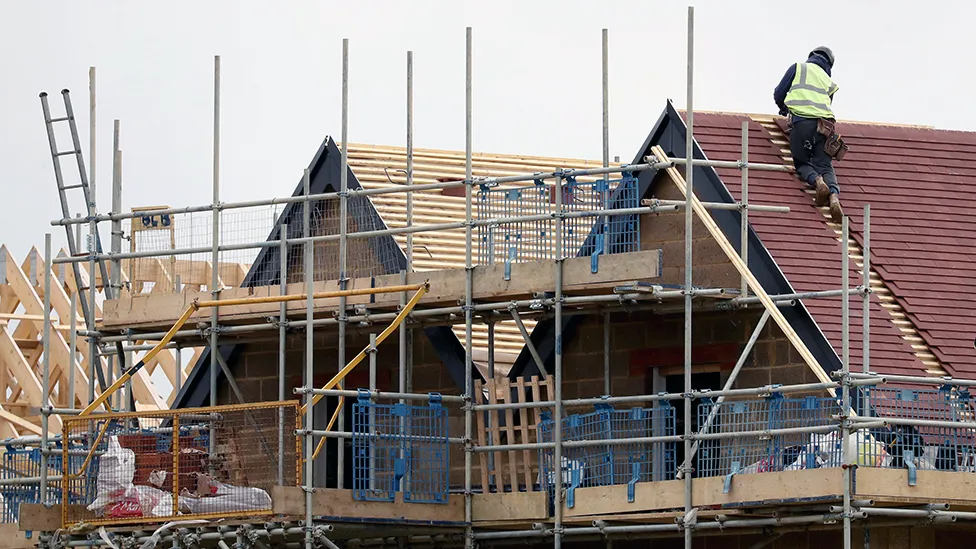Latest News
UK Building Approvals Delayed Severely, Housing Targets at Risk

Introduction
Britain’s housing delivery targets are under renewed pressure as planning approvals fall sharply and project delays worsen across the country. Data from the Office for National Statistics and the Home Builders Federation show that residential building approvals dropped by 11.8 percent in the third quarter of 2025 compared with a year earlier. Developers warn that if the slowdown continues, the government’s target of 300,000 new homes annually will remain out of reach for a third consecutive year.
London and the South East have been hardest hit, with major schemes delayed due to planning bottlenecks, higher borrowing costs, and stricter environmental assessments. Many developers now report that obtaining planning consent can take more than 18 months, double the time it took before 2020. The resulting backlog is restricting new housing supply and intensifying affordability pressures across the capital and regional cities.
Policy Context
The government’s 2025 Housing Strategy promised to streamline planning and accelerate delivery, but the latest data suggest those goals are slipping further away. Local authorities responsible for approvals are struggling with budget constraints and staff shortages. Some councils have paused applications while updating compliance systems to meet new fire safety and sustainability rules. The Department for Levelling Up, Housing and Communities said digital planning reforms are being rolled out, though implementation remains uneven
The Treasury is considering financial incentives for local councils that meet housing approval benchmarks, with details expected in the Autumn Statement. Yet economists warn that these measures will take time to produce results. High borrowing costs remain another obstacle. With the Bank of England’s base rate at 5.25 percent, smaller developers face difficulties securing project finance, forcing many to scale back construction plans
The government insists it is committed to its long-term housing targets, but developers argue that progress will remain limited without faster approvals and better coordination between departments overseeing environmental and housing policy.
Market Response
The slowdown in approvals is now feeding through to the wider construction sector. According to the Construction Products Association, residential building output fell 4 percent in the third quarter, the fifth consecutive quarterly decline. Developers say uncertainty over planning timelines has led to delayed starts and project cancellations, particularly for large mixed-use developments outside central London.
The impact is visible across regeneration areas such as Nine Elms and Greenwich Peninsula, where several high-rise projects are on hold pending environmental assessments. Rising material costs and labor shortages have further reduced profitability. Employment in construction has fallen 2.3 percent over the past year, with subcontractors and small firms most affected.
Land transactions have also slowed, with major developers holding off on acquisitions until planning risks ease. Analysts say the combination of regulatory complexity and higher interest rates is discouraging new investment at a time when supply is already critically low.
Expert View
Housing analysts warn that the UK may fall short of its annual housing goal by nearly 90,000 homes this year. The Home Builders Federation has urged the government to prioritize planning reform and increase local authority resources. Industry economists at Savills say the current approval rate is the lowest in almost a decade and argue that inefficiencies in the system are driving up housing costs.
Environmental compliance rules are another source of tension. Developers say uncertainty surrounding nutrient neutrality and biodiversity regulations has created inconsistencies between planning authorities. While these policies aim to promote sustainability, the lack of clear national standards has delayed projects across multiple regions. Experts are calling for unified guidance that balances environmental protection with delivery targets.
Future Outlook
Construction activity is expected to remain weak through 2026. The ONS projects total housing completions will fall to about 230,000 this year, far below the government’s 300,000-unit goal. Economists say easing inflation and gradual improvements in supply chains could support a modest recovery next year, but real momentum depends on faster planning approvals and lower financing costs.
The Treasury’s expected infrastructure package could provide limited relief if it includes incentives for build-to-rent and affordable housing. London’s housing market will likely feel the greatest impact from continued delays, as population growth keeps pressure on limited supply. Without policy breakthroughs, affordability will remain one of the capital’s most pressing challenges
Conclusion
The sharp decline in building approvals underscores the deep structural issues within the UK’s housing system. Planning backlogs, high borrowing costs, and regulatory uncertainty have combined to slow delivery at a time when demand remains strong. Unless the government implements faster reforms and strengthens local authority capacity, housing targets will continue to drift out of reach. For developers and households alike, the message is clear: Britain’s housing shortage will not ease soon, and affordability will remain a defining challenge through 2026



















